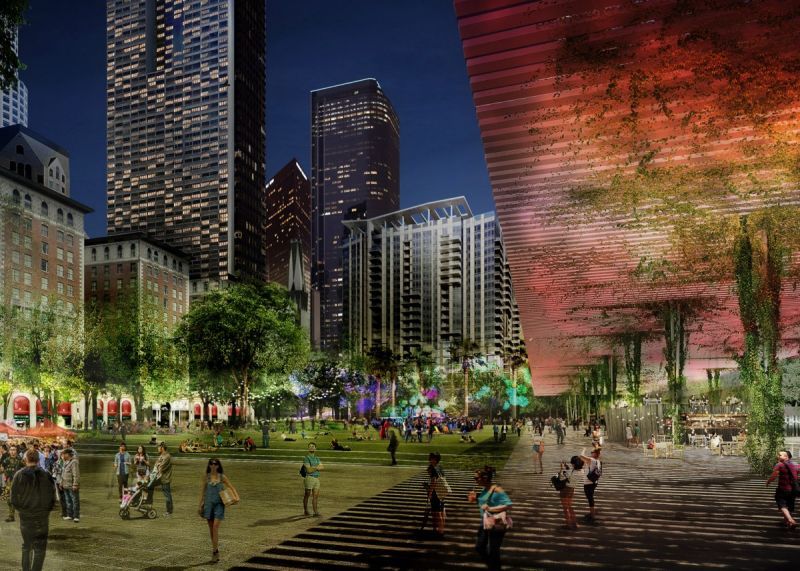With the protests that followed the presidential election in cities nationwide, 2016 once again demonstrated the need for public squares where citizens can meet, dissent, agree and disagree — in other words, enact their civic identity. Some of the year’s biggest public space redesigns focused on connecting people to their city governments, knitting neighborhoods back together, prioritizing accessibility for pedestrians and people of all abilities, and creating flexible spaces that can change according to residents’ needs.
Many of this year’s smaller projects and seemingly outlandish design proposals also focused on health, connectivity and turning unlikely, underused spaces into engaging ones. 2016 saw a proposal to cap a Seattle freeway with a 45-acre park, a plan for a park that will absorb rainwater for an entire Copenhagen neighborhood, and newly vibrant alleyways in Vancouver.
Here are my picks for this year’s biggest public space redesigns.
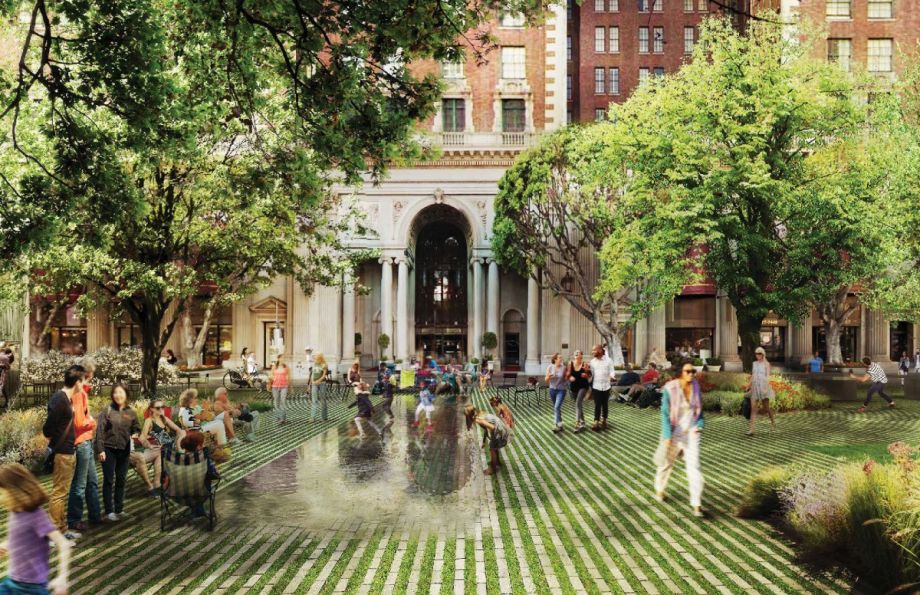
Rendering of Pershing Square redesign (Credit: Agence Ter and SALT Landscape Architects)
Pershing Square, Los Angeles
At long last, a new design was chosen for one of America’s worst public spaces: Los Angeles’ Pershing Square. Out of four impressive finalists, nonprofit Pershing Square Renew chose the design Next City writer Josh Stephens saw as the simplest, most modest and most in line with the goals of the renovation. Pershing Square is notorious for being surrounded by bunker-like walls that separate it from the surrounding streets. The winning design by Agence Ter is almost completely flat. It would require shaving off five feet from the parking garage below the square in order to bring the park flush with the sidewalks. Whether L.A.’s officials will embrace the redesign is still an open question. If $50 million can be raised quickly from public and private sources, the redesigned park is slated to open by 2019.
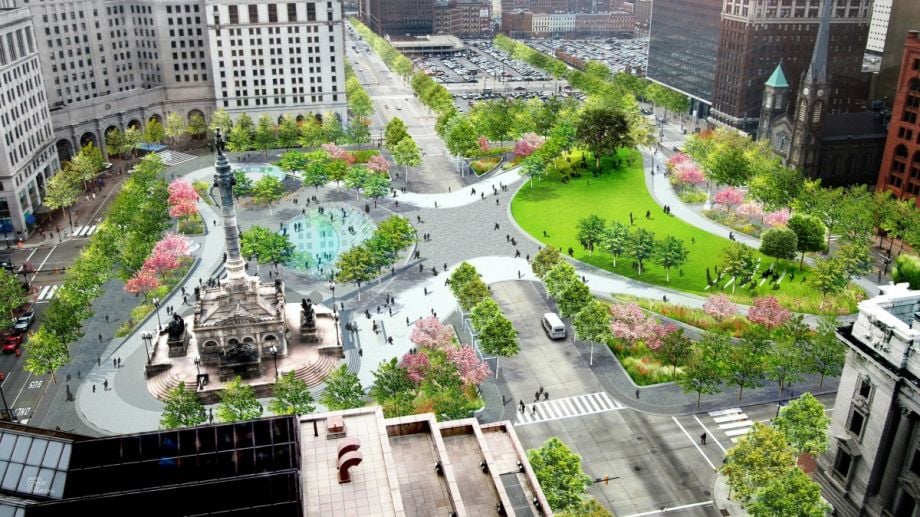
A rendering of the completed Cleveland Public Square, with Superior Avenue running down the center (Credit: Group Plan Commission)
Public Square, Cleveland
Until this year, Cleveland was also home to an underused civic space at its very center. Public Square, a 10-acre park, was bisected by two of downtown’s busiest roadways, leaving the park’s four quadrants largely neglected and avoided. Then this summer, the park reopened after a 15-month, $50 million renovation by James Corner Field Operations that included a new lawn, mirror pool and café — and most crucially, no more traffic. At first buses would have been allowed to pass through the square, but in November the city’s mayor announced that Public Square would be closed to all vehicles.
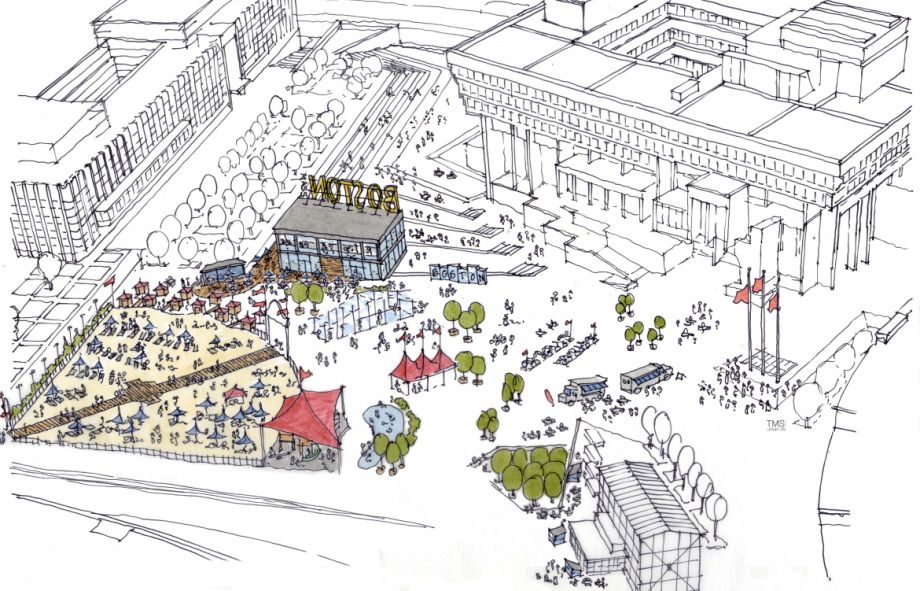
(Rendering: Delaware North Cos. Boston)
City Hall Plaza, Boston
After a public-comment-by-tweet campaign last year, Boston signed a contract in March with hospitality corporation Delaware North to redesign the plaza around City Hall. Whether this redesign — which includes a Ferris wheel, beer gardens and a #BOSTON selfie sign — will actually be successful is still up in the air. But it does point to two trends in public square design: utilizing low-cost, flexible features to create spaces that change according to the seasons, and turning city halls back into gathering spaces. A low-cost pilot in Charlotte will test out similar ideas, transforming the dead space in front of city hall into a multi-use plaza with games, rocking chairs and spots for quiet contemplation.
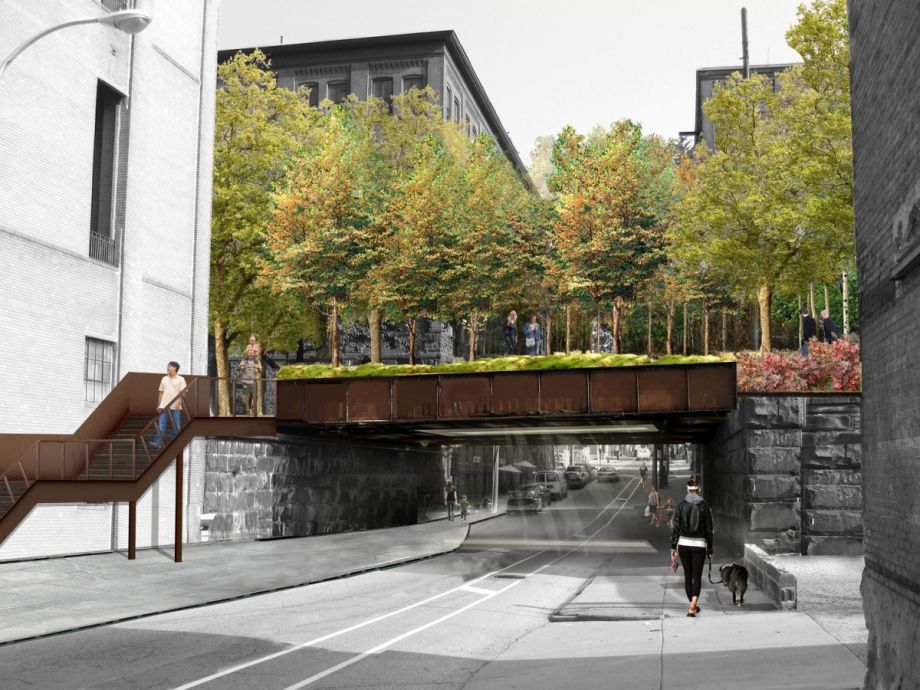
A rendering of the Reading Viaduct Rail Park (Credit: Studio Bryan Hanes)
LOVE Park and Reading Viaduct Rail Park, Philadelphia
Philadelphia’s City Hall plaza got its own redesign in 2014. This year, ground broke on a renovation for LOVE Park across the street, home to the iconic LOVE statue by Robert Indiana. Before the bulldozers got to work, the city lifted the skateboarding ban so skaters could enjoy the concrete, multi-leveled plaza once more. When it opens in spring 2017, the new park will be greener, softer and cozier — and skateboarding will once again be banned.
Ground also broke in Philadelphia on the Reading Viaduct Rail Park, a long-anticipated transformation of an abandoned railroad into an above- and below-ground park. Construction began on a 25,000-square-foot section of elevated track this year. If it goes well, all three miles of the railroad might eventually be converted into parkland and a path for bikes and pedestrians.

A rendering of NC Museum of Art’s outdoor expansion. (Credit: Civitas, Inc.)
North Carolina Museum of Art, Raleigh
City halls and public squares aren’t the only place for citizens to gather, as evidenced by a redesign of the park surrounding the North Carolina Museum of Art in Raleigh. The 17-acre renovated space, which opened in fall, aims to better connect museum-goers with art, nature and each other through outdoor exhibits and spaces for formal and informal gatherings. The Akron Art Museum also unveiled a new garden and public park this year, one that local journalist Steven Litt described as “an implicit critique of the drab parking lots and one-way thoroughfares that flank it.” He continued, “it effectively challenges Akron to do better, think bigger.”
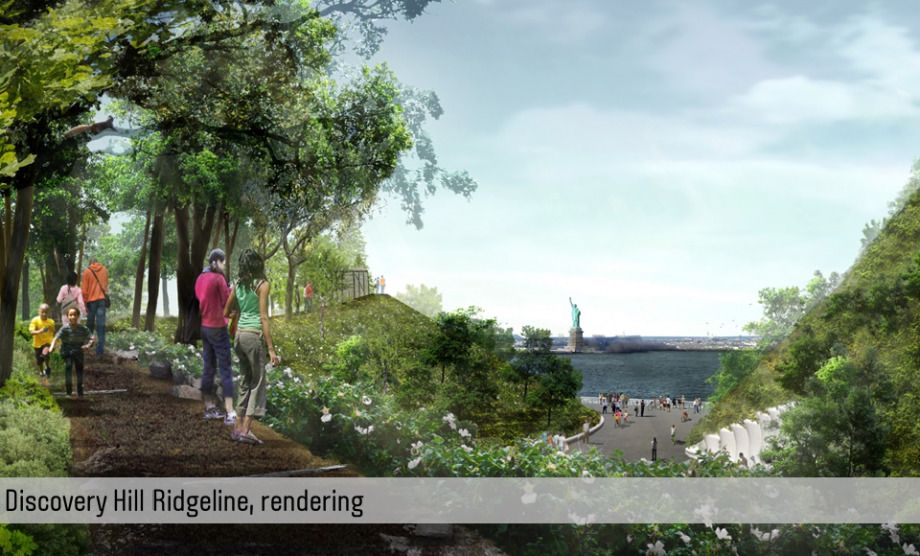
Rendering of Discovery Hill (Credit: Trust for Governors Island)
The Hills on Governors Island, New York City
Parks are also, of course, about escaping the urban hustle and bustle. New York City’s newest big park, the Hills on Governors Island, can only be reached by ferry. Opening in summer 2016, the park adds 10 acres of green space to the city, largely in the form of four artificial hills made of recycled construction debris. The park offers views of downtown Manhattan, Brooklyn and the New York Harbor, boasts the city’s longest slide, and opened nearly a year early thanks to unseasonably warm weather.
Jen Kinney is a freelance writer and documentary photographer. Her work has also appeared in Philadelphia Magazine, High Country News online, and the Anchorage Press. She is currently a student of radio production at the Salt Institute of Documentary Studies. See her work at jakinney.com.
Follow Jen .(JavaScript must be enabled to view this email address)

